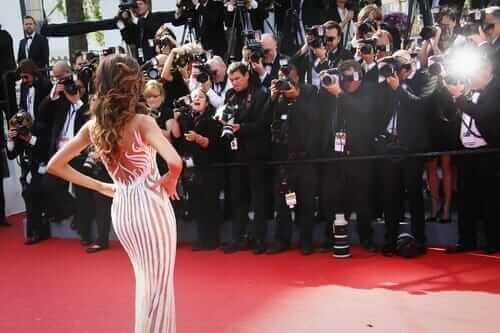The Celebrity Effect: Leveraging Celebrities as a Content Strategy
Campaigns got a much needed makeover when they arrived on social media. They became shorter, more approachable and relevant. What hasn’t changed though is the type of campaigns: product launch, brand awareness, CSR and the subject of this article – brand ambassadors.
When brands brought their famous friends to social media, they were able to add something they never had before: interactivity. With most celebs being active on social media, brands gained the opportunity to be endorsed in a highly personal way across highly personal media.
Here are four ways in which a brand can effectively leverage a celebrity endorser and best engage with audiences on social media.
Introductions and demarcations
A new brand ambassador is exciting news for the brand and (sometimes) even for the fans. Think of your fan community as an extended family and tell them about the new member in an informal yet thoughtful way.
Exciting news! Supermodel @MirandaKerr will be the face of our #HMSpringFashion campaign! pic.twitter.com/gxtaAPjYEj
— H&M (@hm) February 4, 2014
H& M announced their partnership with Miranda Kerr on Twitter. The tweet received over 3000 favorites and is the most engaging tweet of 2014 for the brand.
Apart from the initial introductions, when a brand has more than one ambassador or is running multiple campaigns at the same time, differentiating them can be a challenge. Apart from Miranda Kerr, H& M also has David Beckham representing another line. The two endorsers were demarcated using hashtags, #HMSpringFashion for Miranda Kerr and #BeckhamForHM for David Beckham.
Hashtags are great, giving your audience a reason to use them is better
Twitter was the first social network to implement hashtags and today they’ve even become part of our verbal conversations. This kind of evolution into a trend is something brands follow and any savvy marketer will look to capitalize on. While hashtags themselves boost engagement and people use them organically, giving your followers a reason to use the hashtag gives it significance.
In Nike Basketball’s partnership with LeBron James, the brand created the hashtag #witnesshistory. Nike Basketball asked followers to use the hashtag to congratulate the player on his back-to-back championship wins. This gave followers the ability to personally convey (or at least the illusion of personally conveying) wishes to the star himself, thereby giving them a compelling reason to tweet using it. The hashtag stands as the most used and most engaging hashtag of all time for the brand. Nike Basketball only had to use it 3 times before followers used it 21,000 times.
Tweet with your ambassador
When a celebrity talks about the brand on their social networking pages, the personal comment gives the partnership more credibility. Matt Lalin, founder of Starpower says that a partnership is effective only when a consumer gets the sense that the celebrity truly vouches for the brand, “Authenticity is crucial when aligning your brand with a celebrity, especially in a social media campaign. An authentic connection between brand and celebrity has the power to truly drive consumer behavior.”, Lalin says, if the consumer isn’t convinced that the endorsement is authentic, it might affect the brand undesirably, “If a consumer does not believe the celebrity actually uses/supports the brand they are posting about, it could have an adverse effect on the brand.”
It’s finally here! My @MACcosmetics#VIVAGLAM Lipstick & Lipglass are avail online in N. America, starting NOW!!! http://t.co/d9bA6udHeV
— Rihanna (@rihanna) January 21, 2014
Rihanna launched the summer & fall collection of the VIVAGLAM range for MAC Cosmetics. In January, she teamed up with the brand to support the MACAIDS Funds. In this whole period, she mentioned/ re-tweeted the brand over 15 times. This kind of real time endorsement makes any campaign involving a celebrity more compelling.
In Lenovo’s tie up with Ashton Kutcher, he mentioned the brand in five tweets and is their top tweeter (Person/ company that has talked about the brand most). Similarly, celebrity endorsers LeBron James and Steve Angello are the top tweeters for Nike Basketball and Kraft Mio respectively. These tweets from the celebrities themselves have received a high number of favorites and re-tweets.
What’s in it for the user?
Let’s be honest, consumers hate ads, but brands can’t stop creating commercials. How do you make an advertisement that your audience actually wants to watch? A non-ad ad is the answer and this is where celebrities can play a vital role.
A consumer reacts better to an ad when it gives them an incentive, a personal benefit, rather than one that is a hard sell. Samsung, for example, gave Galaxy owners an exclusive preview of Jay-Z’s album –Magna Carta Holy Grail, 72 hours prior to its actual release. This way the brand was able to hold the viewer’s attention with something that was of interest to them while also conveying brand message. The campaign with Jay-Z was more successful than any of their other campaigns in 2013. This post in particular became Samsung’s most commented and second most engaging post of all time. The YouTube videos of the campaign collectively garnered 52 million views and contribute to about a third of total channel views. This video with Jay-Z is the most viewed video in the channel.
Campaigns are no longer just three print ads with themed TVCs and radio spots. When campaigns were brought to social media, it gave birth to an era of interactivity. Now brands can reach their audiences in the simplest, swiftest way possible. There is no doubt that a familiar figure helps the brands reach become more effective. While celebrity endorsement itself has proven to bring in a lot of new conversations and engagement, it needs to be backed up by an otherwise strong social media presence. Only then can brands and their celebs pull together to create a social media success story.
Methodology
Unmetric compiled this report by sourcing data from its own benchmarking platform. Data and insights on brand activities on Facebook, Twitter and YouTube were analyzed for the period of May 2013 – April 2014. To access all this data, sign up for a 6 day trial.


